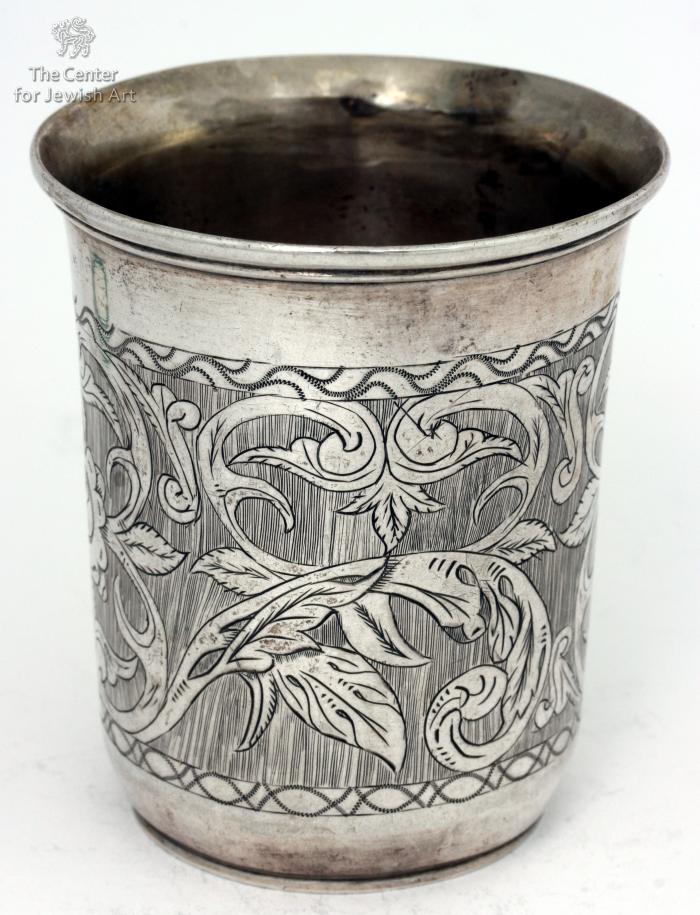
The following description was prepared by William Gross:
The sanctification of the Shabbat and Holidays is connected with a blessing recited over wine or grape juice. While the wine can be drunck from any vessel, often special cups are created for the purpose. In most cases, regular cups are simply decorated or inscribed with names or blessings, rendering them exclusively for the Kiddush.
Among some Hassidic courts it was a practice for the Rabbi to give a blessed silver coin to his Hassidim as an amulet. Such protection might be given for all manner of life events, from healing from an illness to success in travel and the amulet was carried on the body of the recipient. This custom was particularly popular among the Ryzhiner Hassidim and these coins were called "Shmirot". To such coins were attributed extraordinary power and value and they were treasured with great care and love.
After the specifice event for which they had originally be given, such a coin or coins were used in the making of other objects, which maintained the special aura of the Rabbi. Such a coin would be melted in other silver with the amuletic value being spread evenly to all the silver. Then a ritual object would be fashioned by a silversmith and the special nature of the item would be inscribed on it, indicating in one of several ways that this object had been made from "Shmirot". All are of considerable rarity. The use of the item from such silver would renew the blessing of the Rebbe who originally gave it.
This object is a Kiddish cup fashioned from such silver. Such cups were used for blessing wine so that each use conferred again the power of protection granted by the Rabbi. These cups were usually decorated, using both vegetal motifs and the figures of different animals. In this instance only vegetal motifs are present in the engraving.
In this example, the cup is dated by marking the letters needed in the Hebrew phrase "This is made from the Holy Shekel". Adding up the numerical value of the indicated letters yields the Hebrew date of the creation of the object, in this case [5]641 or 1881.
Inscription: The Year "This is Made from the Holy Shekel". (chronogram 5641 = 1881)



